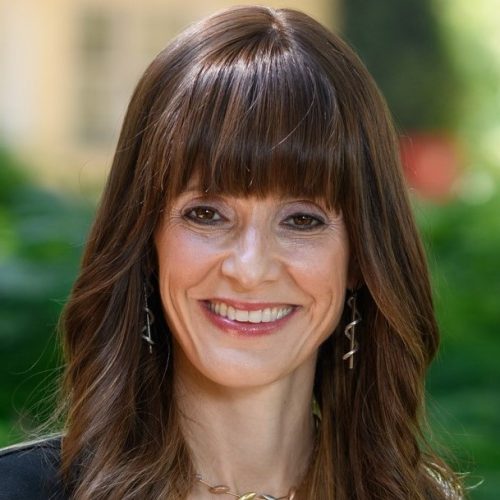

Yonina C. Eldar is a Professor in the Department of Math and Computer Science at the Weizmann Institute of Science, Rehovot, Israel, where she heads the center for Biomedical Engineering and Signal Processing. She is also a Visiting Professor at MIT and at the Broad Institute and an Adjunct Professor at Duke University, and was a Visiting Professor at Stanford University.
She is a member of the Israel Academy of Sciences and Humanities, an IEEE Fellow
and a EURASIP Fellow. She has received many awards for excellence in
research and teaching, including the IEEE Signal Processing Society Technical
Achievement Award, the IEEE/AESS Fred Nathanson Memorial Radar Award,
the IEEE Kiyo Tomiyasu Award, the Michael Bruno Memorial Award from
the Rothschild Foundation, the Weizmann Prize for Exact Sciences, and the
Wolf Foundation Krill Prize for Excellence in Scientific Research. She is the
Editor in Chief of Foundations and Trends in Signal Processing, and serves
the IEEE on several technical and award committees. She heads the Committee for Promoting Gender Fairness in Higher Education Institutions in Israel.
Yonina C. Eldar is a Professor in the Department of Math and Computer Science at the Weizmann Institute of Science, Rehovot, Israel, where she heads the center for Biomedical Engineering and Signal Processing. She is also a Visiting Professor at MIT and at the Broad Institute and an Adjunct Professor at Duke University, and was a Visiting Professor at Stanford University.
She is a member of the Israel Academy of Sciences and Humanities, an IEEE Fellow
and a EURASIP Fellow. She has received many awards for excellence in
research and teaching, including the IEEE Signal Processing Society Technical
Achievement Award, the IEEE/AESS Fred Nathanson Memorial Radar Award,
the IEEE Kiyo Tomiyasu Award, the Michael Bruno Memorial Award from
the Rothschild Foundation, the Weizmann Prize for Exact Sciences, and the
Wolf Foundation Krill Prize for Excellence in Scientific Research. She is the
Editor in Chief of Foundations and Trends in Signal Processing, and serves
the IEEE on several technical and award committees. She heads the Committee for Promoting Gender Fairness in Higher Education Institutions in Israel.
Deep neural networks provide unprecedented performance gains in many real-world problems in signal and image processing. Despite these gains, the future development and practical deployment of deep networks are hindered by their black-box nature, i.e., a lack of interpretability and the need for very large training sets. On the other hand, signal processing and communications have traditionally relied on classical statistical modeling techniques that utilize mathematical formulations representing the underlying physics, prior information and additional domain knowledge. Simple classical models are useful but sensitive to inaccuracies and may lead to poor performance when real systems display complex or dynamic behavior. Here we introduce various approaches to model based learning which merge parametric models with optimization tools leading to efficient, interpretable networks from reasonably sized training sets. We will consider examples of such model-based deep networks to image deblurring, image separation, super resolution in ultrasound and microscopy, efficient communications systems, and finally we will see how model-based methods can also be used for efficient diagnosis of COVID19 using X-ray and ultrasound.
Deep neural networks provide unprecedented performance gains in many real-world problems in signal and image processing. Despite these gains, the future development and practical deployment of deep networks are hindered by their black-box nature, i.e., a lack of interpretability and the need for very large training sets. On the other hand, signal processing and communications have traditionally relied on classical statistical modeling techniques that utilize mathematical formulations representing the underlying physics, prior information and additional domain knowledge. Simple classical models are useful but sensitive to inaccuracies and may lead to poor performance when real systems display complex or dynamic behavior. Here we introduce various approaches to model based learning which merge parametric models with optimization tools leading to efficient, interpretable networks from reasonably sized training sets. We will consider examples of such model-based deep networks to image deblurring, image separation, super resolution in ultrasound and microscopy, efficient communications systems, and finally we will see how model-based methods can also be used for efficient diagnosis of COVID19 using X-ray and ultrasound.
| 8:45 | Reception |
|---|---|
| 9:30 | Opening words by WiDS TLV ambassadors Or Basson and Noah Eyal Altman |
| 9:40 | Dr. Kira Radinski - Learning to predict the future of healthcare |
| 10:10 | Prof. Yonina Eldar - Model-Based Deep Learning: Applications to Imaging and Communications |
| 10:40 | Break |
| 10:50 | Lightning talks |
| 12:20 | Lunch & Poster session |
|---|---|
| 13:20 | Roundtable session & Poster session |
| 14:05 | Roundtable closure |
| 14:20 | Break |
| 14:30 | Dr. Anna Levant - 3D Metrology: Seeing the Unseen |
| 15:00 | Aviv Ben-Arie - Counterfactual Explanations: The Future of Explainable AI? |
| 15:30 | Closing remarks |
| 15:40 | End |
© 2018-2022 WiDS TLV – Intuit. All rights reserved.
Scotty – By Nir Azoulay
Design: Sharon Geva